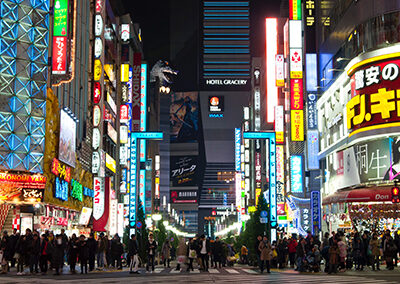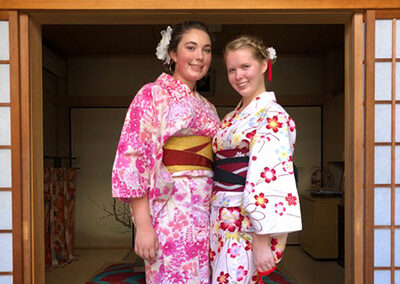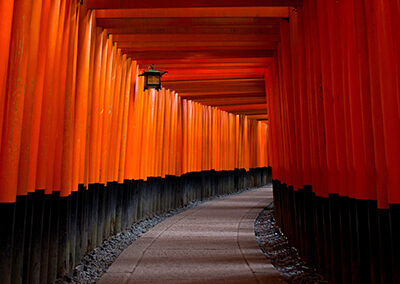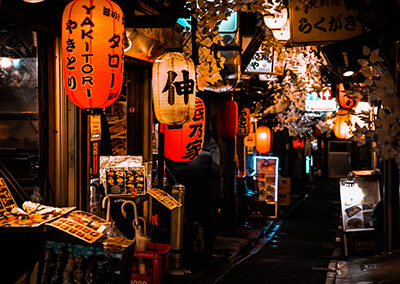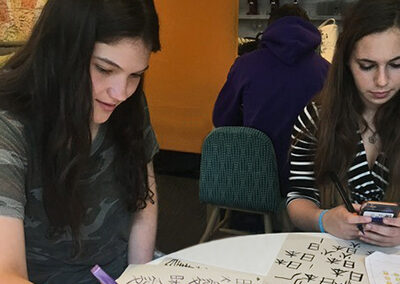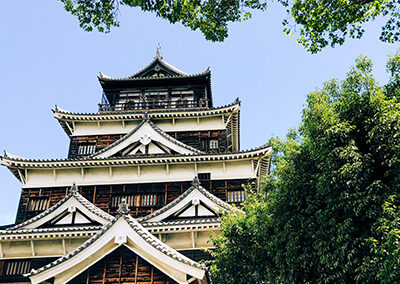Smithsonian Student Travel | Japan | NEW
Highlights
-
Spend a night at a 1,000-year-old temple and learn about Buddhism
-
Learn how to cook traditional Japanese dishes like sushi, ramen, and gyoza
-
Capture the perfect image of Mt. Fuji from the Hakone Ropeway gondola
-
Take an anime drawing class and see legendary illustrations at Studio Ghibli Museum
Itinerary
This itinerary represents our plan for the program. However, we may implement changes if we identify opportunities to improve the experience, to take advantage of unexpected events, or to accommodate local schedule changes.
Departure • Travel Day • Meet your student travel group and one of your trip leaders in Los Angeles and fly together to Tokyo, Japan.
Tokyo • 1 day • Spend the first evening in Tokyo going over the overall goals and itinerary of your trip and getting to know your fellow participants and leaders before departing south for Hiroshima.
Hiroshima & Miyajima Island • 3 days • Hiroshima, the first city in the world to sustain a nuclear bomb attack, has been widely renewed and is now known as a City of Peace, where many international visitors come to discuss social issues. Spend three days learning about imperial and military history, with a day trip to Miyajima, a small island off the coast. Visit the entrance to the Itsukushima Shrine, first built in the 12th century, then visit the nearby Museum of History and Folklore, full of artifacts dating back to the 1800s. Explore Hiroshima Castle, originally constructed in the 1590s, before winding your way down the street to explore the more contemporary Mazda automobile museum.
Kyoto • 4 days • Climb aboard one of Japan’s iconic bullet trains and continue to Kyoto, once the capital of Japan and one of the oldest municipalities on the island. Kyoto is a wealth of historical and cultural treasures, as well as a bustling modern city whose industry focuses on information technology and electronics, and is home to the headquarters of Nintendo. Spend four days exploring ancient cultural practices like soybean fermentation and tea production. Photograph traditional wooden houses, Shinto shrines, and classical Buddhist Temples. Roll up your sleeves and learn the highly kinetic tradition of Taiko drumming during a group lesson.
Mt. Koya • 1 day • Travel to the Wakayama Prefecture for a stay at a 1,000-year-old Buddhist temple, a site of particular religious and philosophical importance. Here, your Smithsonian Student Travel Expert will join the program and share valuable insights into centuries of Japanese history. Mt. Koya is the seat of the Kōyasan sect of Shingdon Buddhism. The site was historically chosen for its appearance similar to a lotus plant, as it is situated on a plain 800 meters above sea level, with eight mountain peaks surrounding.
Hakone • 1 day • By train, continue north toward the capital, Tokyo, staying in a small village in Kanagawa prefecture at a traditional ryokan inn. Take a dip in local hot springs and experience stunning views of Mt. Fuji during a ride on the Hakone Ropeway. Today, Hakone’s economy is mainly focused on tourism and the arts. Visit both the Hakone Open-Air Museum and the Pola Museum of Art.
Tokyo • 6 days • With our final days in Tokyo, discover innovative approaches to urban planning, technical applications, and cultural evolution in what is currently the biggest megacity in the world with a population of over 37 million. The de facto capital of the country since the relocation from Kyoto by the Meiji Restoration of the late 19th and early 20th centuries, Tokyo is a sprawling city full of skyscrapers and neon lights existing alongside ancient temples and historical botanical gardens. Emerge at Shinjuku Station, the world’s busiest, and sample many of the unique gastronomical delights. Stroll the grounds of the Imperial Palace and learn about traditional architecture, then compare it to the densely packed buildings covered in bright lights and anime during a visit to Akihabara Electric Town. Delight your palate by trying soba and udon noodles, sushi, and tempura. Visit the Tsukiji fish market, the largest in the world. Interview local fishmongers about traditional fishing practices and sustainability initiatives, and try your hand at rolling your own sushi, a tradition passed down for generations. Gain a deeper understanding of how the fishing industry, specifically overfishing, is impacting the region’s rich culinary traditions.
Return • Travel Day • Fly from Tokyo back to Los Angeles with your group and a trip leader, then continue on to your final destination.
Smithsonian Student Travel Experts
The expert(s) highlighted below are examples of professionals that will join the group at various points throughout the itinerary to add their expertise and insight to the program theme.

Hugh Shapiro, Professor
Hugh Shapiro is a professor of East Asian history at the University of Nevada, with a BA from Stanford University and a PhD from Harvard. As a Smithsonian Journeys Expert, he has lectured in 15 countries in Eurasia, and has traveled extensively throughout the region. Hugh has enjoyed visiting appointments at Princeton University, at universities in China, Japan, and Taiwan, and at the Institute for Advanced Study in Princeton. He received the Li-Qing Prize for the History of Chinese Science and won his university’s highest teaching award. His extensive archival and fieldwork focuses on the history of medicine, disease, and the body in comparative context. His recent work appears in volumes published by Harvard University Press, Brill, and Oxford University Press. Hugh’s other research and teaching interests include visual and performance art, Central Asia, and the history of de-colonization and authoritarianism.
Hugh will be joining the June 29 and July 11 departures of the Japan program.

Kaitlyn Ugoretz, Assistant Professor and Associate Editor
Kaitlyn Ugoretz is an Assistant Professor and Associate Editor at the Nanzan Institute for Religion and Culture in Nagoya, Japan. Her experience studying and working abroad in China inspired her to spend her life learning and teaching about East Asia. She received her BA and MA from the University of Pennsylvania and is finishing her PhD at the University of California, Santa Barbara. As an expert on Japanese religion and culture, Kaitlyn has conducted fieldwork at shrines, temples, and other historical sites across Japan. Her research focuses on the global spread of the Japanese religion called Shinto through digital technology and popular media. She consults on games and television and writes for outlets including Religion News Service, The Washington Post, Critical Asian Studies, and The Conversation. She is a frequent podcast guest and the host of the award-winning educational YouTube channel “Eat Pray Anime,” which explores Japanese religious history and culture through comics, anime, and video games.
Kaitlyn will be joining the July 18 departure of the Japan program.
What to Expect
Physical Activity • This is a physically active summer travel program. You can expect to hike mountainous trails to visit temples and shrines, walk the neon-lit streets of Tokyo while working on projects, swim, and do other fun activities over the course of the trip that may be new and unique. You do not need to be at peak fitness to participate, but it is important that you have a desire to be physically active, and that you are excited about trying all activities.
Accommodations • The group stays at a variety of residences on this program. While in Kyoto and Tokyo, we stay in hostel-style accommodations with shared common spaces. When visiting Mt. Koya, we enjoy simple temple accommodations. In Hiroshima, we stay in a small local hotel. On an overnight stay on the island of Miyajima and while in Hakone, we stay in a traditional ryokan inn.
Climate • Japan has a very dynamic climate, with significant changes by season and region. Summers in Japan are typically hot and humid, with temperatures ranging from 70 to 90 °F (21 to 32 °C), with heat especially noted in Tokyo, Kyoto, and other metropolitan areas.
Meals • Most breakfast meals will be taken at our accommodations, while lunch and dinner will typically be eaten out.
Cuisine • Traditional Japanese Breakfast consisting of rice and miso soup and side dishes including ohitashi (boiled vegetables), natto (fermented soybeans), pickles, and grilled fish will typically be served at our accommodations, along with some more Western options. For lunch and dinner, we usually take our meals at Japanese restaurants, or perhaps visit a food market.
Enroll in two programs & save $500!
$300 tuition discount + no second application fee

